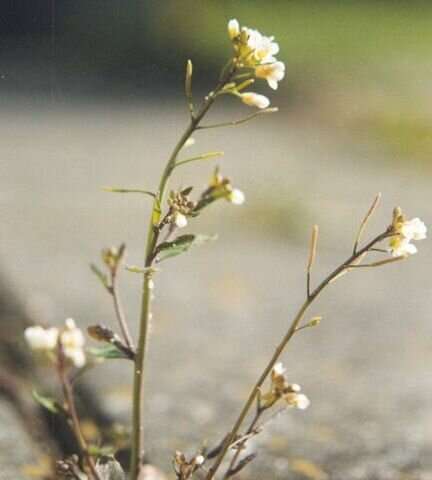Two genomes can be better than one for evolutionary adaptation, study finds

Scientists have revealed how certain wild plants with naturally doubled 'supergenomes' can stay ahead of the game when it comes to adapting to climate volatility and hostile environments.
This world-first study, published in Nature Ecology and Evolution,could have significant implications for plant and crop sustainability in the face of climate change.
The research team used a close relative of the native UK plant Arabidopsis, or thale cress, which can have either a single or a double genome. The findings provide the most solid evidence to date of the pervasive evolutionary effects of a doubled genome across an entire species range.
The study is also the first to comprehensively test a century of evolutionary theory using new technologies to sequence hundreds of genomes. The work was led by Associate Professor of Evolutionary Genomics Levi Yant, from the University of Nottingham's School of Life Sciences and Future Food Beacon.
Whole genome duplication (genome doubling or polyploidy) happens in all kingdoms of life and is most common in plants. It can occur during a type of cell division called 'meiosis' and is very common in crops that we eat including, wheat, apples, bananas, oats, strawberries, sugar and brassicas like cauliflower. It can also occur in the most aggressive cancers and is associated with cancer progression, so it is important to understand what factors stabilise genome duplication as well as how genome doubled populations evolve.
Associate Professor Levi Yant said: "Understanding how that strange state of having 'too much DNA', which clearly causes initial problems, can be overcome – and even turned into an evolutionary positive – is a big scientific question. It's almost always a bad thing to have too much DNA, but we think that sometimes it makes for a 'hopeful monster' that just might flourish.
"Our previous work over the past five years has been to figure out how these doubled genome populations stabilise in the first place. The initial issue is that when genome duplication first occurs, suddenly there are too many chromosomes for the cell machinery. These chromosomes literally become entangled and break when they separate during cell division. It can be a proper mess! This can also become a problem in some crops, especially in the elevated temperatures, and so global warming makes this problem worse.
"We figured out a few years ago how naturally-occurring whole genome duplications successfully evolve to be stable. We then wanted to follow this up with a broader-scale study looking at adaptations across an entire species range because we know that some of the genome doubled populations successfully invaded very hostile habitats such as toxic mines, railways and beach environments which are not generally plant-friendly. In fact, one of the species we are working on has a full six genome copies and is the most rapidly spreading plant in the U.K., growing specifically in salted roadsides since the practice became common in the 1970s!
"These tough little plants can become little genetic adaptation machines which allows them to invade hostile environments and even thrive where others can't. In fact, a large proportion of the most invasive plant species in the world are genome doubled, so we hypothesised that there are adaptations that occur as a result of genome duplication that we can focus on and find the genes responsible for the adaptations. To test this hypothesis in this study, we resequenced about 300 genomes of this little plant Arabidopsis arenosa,collected from 39 geographical areas across Europe, and looked for the little footprints of selection, a particular gene, that appeared helpful for adaptation to a particular area."
"In addition to particular genes, we found something even more significant – that in the genome doubled variants the fundamental processes governing how Darwinian selection operates appear a bit different to how they are in the single genome species. That is, we found broader reasons why genome doubled populations may adapt better that go beyond the fact that they simply have more DNA or might harbour new gene variants."
They found that in doubled genome versions of a species the linkages between neighbouring genes on the same strand of DNA are less strict. It was more common for two genes near one another on a particular piece of DNA to have different combinations of mutations than it was in single genome versions of the species. It may be that this process of 'linkage breaking' between neighbouring genes is more efficient in the doubled genome species because a greater variety of different combinations are present and the DNA recombines with additional partners, generating novel combinations of genes. This means that good versions of one gene can escape from bad versions of another genes in its 'DNA neighbourhood', allowing Darwinian selection to occur more efficiently, purging from a population the bad versions and selecting the good.
The recent results from their unique and large population-wide assessment add weight to the theory that these special plants with 'too much DNA' have a broad range of weapons to adapt to climate change and evolve to become even more hardy in the future. However, the researchers say a lot of work still needs to be done to understand what is driving the successful establishment and spread of newly-formed double genome lineages.
More information: Patrick Monnahan et al. Pervasive population genomic consequences of genome duplication in Arabidopsis arenosa, Nature Ecology & Evolution (2019). DOI: 10.1038/s41559-019-0807-4
Journal information: Nature Ecology & Evolution
Provided by University of Nottingham




















